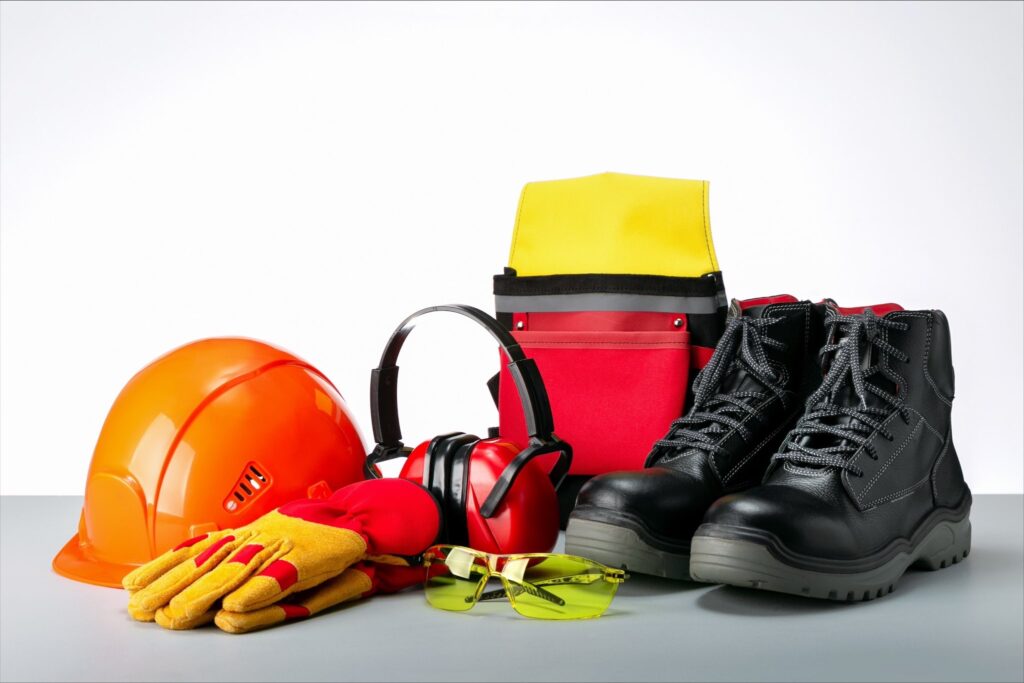Many major outdoor construction projects involve cutting concrete slabs, and if you don’t know what you’re doing when you’re cutting this dense and rough material, you could get seriously hurt. Not only should you ensure you’re always using the right tools for cutting concrete, but you should also always follow these safety tips for cutting concrete to avoid injury.
5 Important Tips For Cutting Concrete Safely
01. Wear Protective Gear
Cutting concrete is not a chore that you should try to do if you’re wearing shorts and flip flops. If you’re on a commercial job, there are specific protective gear requirements that you must follow, but if you’re working on a backyard project, you won’t have someone making you wear your gear, so you’ll need to take responsibility for protecting yourself. Always wear long, rugged pants such as blue jeans, boots, protective glasses, a ventilator, and ear plugs.

When you cut dry concrete, you’re going to generate a ton of dust, which is why a respirator or at least a dust mask is recommended. You don’t want that dust getting into your lungs. It’s also a noisy job, so ear plugs, while not mandatory, are suggested so that you can still hear after the project is done.
02. Go Slow

Cutting a concrete slab is not a quick task. In fact, the slower you go, the better results you’ll have. Going too fast can result in sloppy cuts, overheated equipment, and careless moves. For the best results, make several shallow passes over the concrete rather than trying to make one deep cut the first time by. This will protect your saw blade as much as possible and ensure the cuts are even and smooth.
03. Ensure Correct Water Flow

If you’re using a wet saw to cut the concrete slab (and you probably are), make sure you have enough water flowing over the saw blade for the entire project. The water will help mitigate the amount of dust in the air and will keep your saw blade cooler for longer, allowing you to make more cuts at a time. Dry saws are better for projects that don’t have access to a steady flow of water, are indoors, or quick cuts that won’t overheat the equipment.
04. Inspect Your Blade Before Each Use
Working with a damaged saw blade is a huge safety risk. If your saw blade is missing a tooth, is cracked, or warped, it could behave in a way that makes the tool unsafe to operate. Not only that, but you’ll have a much harder time cutting through the concrete at all. Inspect your blade before each use, even if you just used it an hour ago. You never know if something happened on that last cut that caused damage to the blade or if someone used it in your absence and damaged it.
05. Ventilate Well
As previously mentioned, you’ll be generating a lot of dust when cutting a concrete slab, even if you’re using a wet saw (although it will be a lot less than with a dry saw). Moreover, most saws run on gasoline or diesel, and those fumes can build up quickly. For these reasons, make sure you always work in a well-ventilated area and use fans to draw in fresh air and push the fumes and dust out.
Conclusion
All concrete saws come with user manuals that should be read before operation. These safety tips will be reiterated in those manuals because they’re that important. Heed these tips for your next concrete project and stay safe.
It is risky to be near construction sites. Safety must therefore come first for both those who work there and those who just visit. You can read some helpful construction safety advice for a safer working environment here –